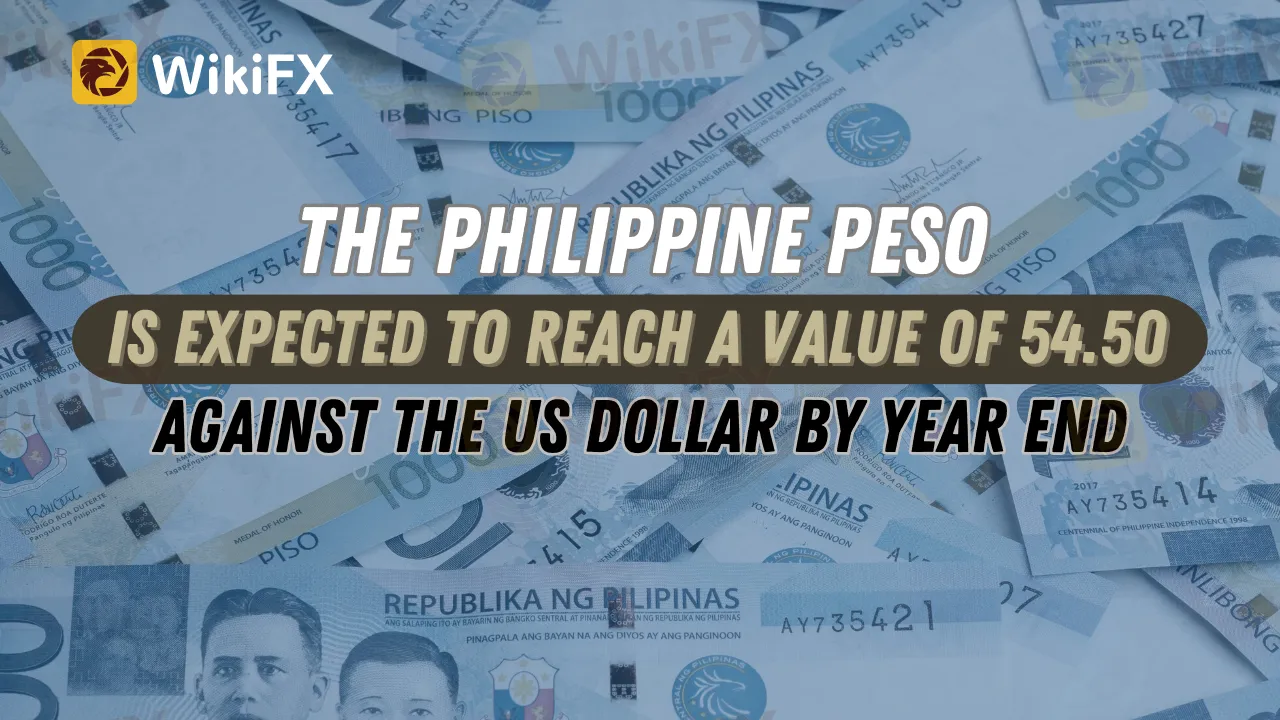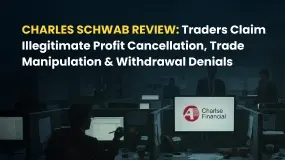简体中文
繁體中文
English
Pусский
日本語
ภาษาไทย
Tiếng Việt
Bahasa Indonesia
Español
हिन्दी
Filippiiniläinen
Français
Deutsch
Português
Türkçe
한국어
العربية
The Philippine Peso is Expected to Reach a Value of 54.50 Against the US Dollar by Year End
Abstract:The Philippine Peso is set to strengthen to 54.50 against the US dollar by year-end, according to HSBC. Challenges include a slowdown in the export sector and interest rate differentials

The Philippine Peso is expected to rise this year, reaching a value of 54.50 per US dollar by the end of the year. This forecast follows a period of weakness in which the peso fell about 10%, ending at 55.755 at the end of 2022, compared to 50.999 at the end of the previous year. The forecast was revealed by HSBC, the British banking giant.
In an online press briefing, James Cheo, the Chief Investment Officer for Southeast Asia at HSBC, explained that the local currency could appreciate further towards the end of the year, with a target rate of 54.50 to the dollar. Cheo attributed this potential appreciation to the peaking of the dollar's strength.
However, Cheo also pointed out some challenges that may act as headwinds for the Philippine Peso. These include a downturn in key areas of the economy, notably in exports. Furthermore, the interest rate gap between the BSP and other nations like as Indonesia and India may affect money flows toward higher interest rates and growth rates.
Cheo thinks that when the dollar decreases, the peso will eventually stabilize. He predicted that the peso will likely stabilize by the end of the year. He did, however, highlight that the currency's near-term success is dependent on global mood. In periods of risk-off sentiment, it would be challenging for the peso to outperform.
Regarding monetary policy, Cheo suggested that the BSP could still raise policy rates following a prudent pause in May. The central bank had kept the policy rate unchanged at the May meeting but may tighten further if inflation surprises on the upside. Inflation in the Philippines has been higher compared to other countries in the region.
Following a series of rate rises since May of the previous year, the BSP opted to keep key policy rates steady in May 2023 due to a downward trend in inflation and the first-quarter GDP growth of 6.4 percent.

Cheo estimated that if inflation continues under control, the BSP would maintain rates unchanged for the rest of 2023. He also said that the Philippines' monetary policy would most certainly continue tight, thereby slowing economic development. As a result, HSBC currently maintains a neutral stance on the Philippine equity market.
Despite adversity, the peso has already shown resiliency. It touched an all-time low of 59 to the dollar in October before rebounding to the 53 to the dollar region in February. This recovery was ascribed to aggressive rate rises by the BSP Monetary Board and the central bank's involvement in the foreign currency market.
According to HSBC, the country's GDP would rise by 4.8 percent this year, after which it will accelerate to 7.6 percent in 2022, up from 5.7 percent in 2021. Cheo noted that the Philippine economy has been propelled by robust private consumption, investment, and consistent state infrastructure expenditure.
Fan Cheuk Wan, HSBC's Chief Investment Officer for Asia, also commented on the US Federal Reserve's monetary policy. Wan predicted another 25-basis-point rate hike next month, following a recent pause. The Fed's policy rates are expected to reach their peak, with one more rate hike in July. In 2024, the Fed is anticipated to cut rates by a total of three 25-basis-point increments, taking into account persistent core inflation. Historically, such a peak in US policy rates has been favorable for risk assets, including equities, investment-grade credit, emerging markets, and Asian assets, according to Wan.
Cheo emphasized that the Philippine economy's recovery will likely be more gradual as global growth slows down. However, he highlighted several factors that will continue to support growth throughout the rest of 2023. These factors include strong employment, the recovery of the tourism sector, expanding production and retail sales, as well as sustained public investment.
Looking ahead, HSBC sees opportunities in the Philippine stock market, particularly in selected consumer companies and banks. The bank maintains a neutral stance on the market for now but notes that consensus growth forecasts for the stock market remain healthy for 2023. Furthermore, HSBC considers the stock market's valuation to be reasonable and undemanding.
In conclusion, HSBC forecasts that the Philippine Peso would increase to 54.50 per US dollar by the end of 2023. While there are certain obstacles, such as the slowing of key economic sectors and the interest rate discrepancy, the peso is projected to stabilize as the dollar falls. The BSP's monetary policy could still see further tightening, depending on inflation trends. The Philippine economy is projected to experience a gradual recovery, supported by various factors. HSBC remains neutral on the Philippine equity market but identifies opportunities in consumer companies and banks. As for the global outlook, the US Federal Reserve is anticipated to continue its tightening cycle with one more rate hike before eventually cutting rates in 2024, which could have positive implications for risk assets.
Get the WikiFX App on your smartphone to stay informed about the latest news. Download the application: https://www.wikifx.com/en/download.html

Disclaimer:
The views in this article only represent the author's personal views, and do not constitute investment advice on this platform. This platform does not guarantee the accuracy, completeness and timeliness of the information in the article, and will not be liable for any loss caused by the use of or reliance on the information in the article.
Related broker
Read more

Charles Schwab Review: Traders Claim Illegitimate Profit Cancellation, Trade Manipulation & More
Have you been lured into the Charles Schwab app for trading on the back of outrageous profit claims by the broker? Did you fail to receive any of these? Does the broker deny withdrawals every time you request and cancel your forex trading account? Have you been victimized financially by its trade manipulation? Act before you are left with a NIL balance in your account. Many traders have questioned Charles Schwab customer service and many other operational executives for the aforementioned illegitimate trading activities. In this Charles Schwab review article, we have shared some of their comments. Read on!

AMP Futures Exposed: Traders Raise Alarms Over Illegitimate Account Blocks & Bad Customer Service
Has AMP Futures blocked your forex trading account? Does it fail to provide any explanation for this act? Do you face issues concerning deposits to your AMP Futures account? Is the customer service non-existent for any trading query you raise with it? You are not alone! Many traders have been facing these issues upon AMP Futures login. Some of them have commented on AMP Futures review platforms. In this article, we have shared some reviews that you can look at. Read on!

FXGlory Review: Vanishing Profits, Capital Scams & Withdrawal Charges Keep Annoying Traders
Does FXGlory remove all your forex trading account balances upon fund withdrawal requests? Or do you witness incorrect trading account balances after fund withdrawals? Does the Saint Lucia-based forex broker charge you for fund withdrawals? All these and many more scam-related complaints have been filed against the forex broker. In this FXGlory review article, we will discuss several complaints. Read on!

PINAKINE Broker Review: A Complete Look at Its Services and Risks
Finding a trustworthy broker from the huge and often confusing world of online trading options is one of the biggest challenges a trader faces. In this competitive market, PINAKINE Liquidity Limited has appeared, getting attention with promises of high leverage and zero-commission trading. However, a closer look shows important factors that every potential client must think about before investing. The most important thing to consider with PINAKINE is that it has no regulation. This fact completely changes how risky the broker is and has major effects on how safe your investments will be. This review gives a complete and fair examination based on information available to the public. We will break down its services, trading conditions, platform technology, and the possible risks involved, helping you make a fully informed decision.
WikiFX Broker
Latest News
Voices of the Golden Insight Award Jury | Tim Waterer, Chief Market Analyst of KCM Trade
Stonefort Securities Review: A Fair Look at Safety, Rules, and What Traders Say
Trump asks for meat packer probe over beef prices
Prop Firm Scams: When ‘Getting Funded’ Costs You Everything
PINAKINE Broker Review: A Complete Look at Its Services and Risks
One-Click Access to Broker Official Group Chats & Exclusive VPS Benefits
Consumer sentiment nears lowest level ever as worries build over shutdown
Uniglobe Markets MT4 Review: A Complete Look at Features, Costs, and Important Safety Issues
Is PINAKINE Broker Safe or a Scam? A 2025 Complete Review
Easy Money Doesn't Exist! High-Return Promise Turned into an RM44,000 Scam
Currency Calculator




